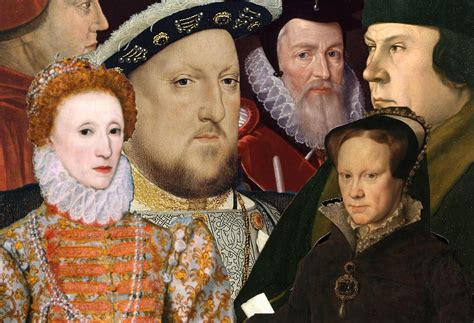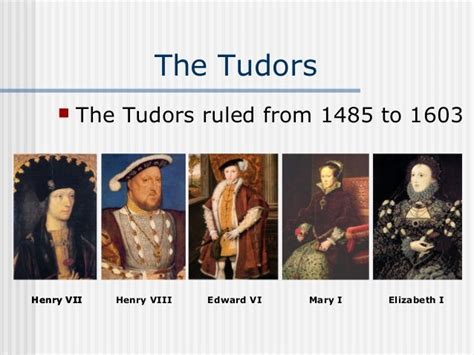tudor era england | when did the tudors end tudor era england The Tudors, image and reality, a history of Tudor England. Richard Rex. 10 min read. The Tudors remain among the most instantly recognisable of England’s monarchs. There is no mistaking Henry VIII in the great Holbein portrait of . Online virtual tour of the property address 35 Malta Ave. Skip to main content 35 Malta Ave. "Unit 99 ", Brampton. 35 Malta Ave. Home; 3D Tour; Photo Gallery; Floor plan; Neighbourhood; Property Info; Contact Agent; Feature Sheet; Toggle navigation. 3D Tour. Photo Gallery. Show all photos. Floor Plan. Neighbourhood .
0 · who were the tudors history
1 · when did the tudors rule
2 · when did the tudors end
3 · tudor and stuart family tree
4 · the tudors history facts
5 · the tudor era henry viii
6 · the tudor era elizabeth 1
7 · fashion in the tudor era
Aventus by Creed is a Chypre Fruity fragrance for men. Aventus was launched in 2010. Aventus was created by Jean-Christophe Hérault and Erwin Creed. Top notes are Bergamot, Black Currant, Apple, Lemon and Pink Pepper; middle notes are Pineapple, Patchouli and Moroccan Jasmine; base notes are Birch, Musk, oak moss, Ambroxan .
The Tudor period saw the gradual evolution of England’s medieval army into a larger, firearm-wielding force supported by powerful ships and formidable gun forts.The House of Tudor was an English and Welsh dynasty that held the throne of England from 1485 to 1603. They descended from the Tudors of Penmynydd, a Welsh noble family, and Catherine of Valois. The Tudor monarchs ruled the Kingdom of England and the Lordship of Ireland (later the Kingdom of Ireland) for 118 years with five monarchs: Henry VII, Henry VIII, Edward VI, Mary I and Elizabeth I House of Tudor, an English royal dynasty of Welsh origin, which gave five sovereigns to England: Henry VII (reigned 1485–1509); his son, Henry VIII (1509–47); followed .The Tudors, image and reality, a history of Tudor England. Richard Rex. 10 min read. The Tudors remain among the most instantly recognisable of England’s monarchs. There is no mistaking Henry VIII in the great Holbein portrait of .
Life in 15th century CE Tudor England witnessed great changes as Henry VIII of England (r. 1509-1547 CE) swept away the monasteries and challenged the Catholic Church. . The House of Tudor ruled England from 1485 to 1603 CE. The period is seen as a Golden Age of English history when strong-willed monarchs made lasting contributions to the .
The years of Tudor rule saw unprecedented upheaval. Discover the huge changes that took place between the crowning of Henry VII and death of Elizabeth I. The House of Tudor, reigning from 1485 to 1603, stands as one of the most significant dynasties in English history. This period is marked by dramatic political shifts, .

christian dior watch buy
Early Life. Elizabeth was born 7 September 1533 at Greenwich Palace, the daughter of Henry VIII of England (r. 1509-1547) and Anne Boleyn (c. 1501-1536). The princess was named after her grandmother, Elizabeth of York .History | October 11, 2022. Why Art Was Such a Powerful Tool for England’s Tudor Monarchs. An exhibition at the Met features 100-plus paintings, sculptures, decorative works and objects that .The House of Tudor (/ ˈ tj uː d ər / TEW-dər) [1] was an English and Welsh dynasty that held the throne of England from 1485 to 1603. [2] They descended from the Tudors of Penmynydd, a Welsh noble family, and Catherine of .The Tudor era saw unprecedented upheaval in England. Between them the five Tudor kings and queens introduced huge changes that are still with us today. The years between the crowning of Henry VII .
The Elizabethan age (1558–1603) is named after the reign of England’s last Tudor monarch, Queen Elizabeth I. The period is often referred to as a ‘Golden Age’ of history: England became a major European power in politics, exploration, trade and the arts, while Elizabeth I’s long rule created stability after the shorter, tumultuous rules of her siblings, Edward VI and .The Elizabethan era is the epoch in the Tudor period of the history of England during the reign of Queen Elizabeth I (1558–1603). Historians often depict it as the golden age in English history. The Roman symbol of Britannia (a female personification of Great Britain) was revived in 1572, and often thereafter, to mark the Elizabethan age as a renaissance that inspired national pride . England under the volatile Tudor dynasty was a thriving home for the arts. An international community of artists and merchants, many of them religious refugees, navigated the high-stakes demands of royal patrons, including England’s first two reigning queens. . from first-hand historic accounts from the Tudor period. This Audio Guide is . The House of Tudor ruled England from 1485 to 1603 CE. The period is seen as a Golden Age of English history when strong-willed monarchs made lasting contributions to the nation's history, strutted around in flamboyant clothes and gave endless material for historians and fiction writers ever-after.
Elizabethan Theatre, sometimes called English Renaissance theatre, refers to that style of performance plays which blossomed during the reign of Elizabeth I of England (r. 1558-1603) and which continued under her Stuart successors. Elizabethan theatre witnessed the first professional actors who belonged to touring troupes and who performed plays of blank verse .
Living Like a Tudor: Woodsmoke and Sage: A Sensory Journey Through Tudor England Take a 500-year journey back in time and experience the Tudor era through the five senses.
They ruled England during the era when Western Europe moved from the medieval to the early modern, and they instituted changes in government administration, the relationship between crown and people, the image of the monarchy and the way people worshiped. . Owen Tudor, a Welsh landowner, fought in the armies of King Henry V of England. When .The Tudor period saw the gradual evolution of England’s medieval army into a larger, firearm-wielding force supported by powerful ships and formidable gun forts to protect the country from the threat of invasion. . More about Tudor England. Tudors: Parks and Gardens . Tudor parks and gardens provided an opportunity for dramatic displays of .In England and Wales, the Tudor period occurred between 1485 and 1603, including the Elizabethan era during the reign of Elizabeth I (1558–1603). The Tudor period coincides with the dynasty of the House of Tudor in England, which began with the reign of Henry VII.Under the Tudor dynasty, art, architecture, trade, exploration, and commerce flourished. [1] During this period, England developed into one of the leading European colonial powers, with men such as Sir Walter Raleigh taking part in the conquest of the New World. Nearer to home, campaigns in Ireland brought the country under strict English control. Culturally and socially, the Tudor period saw many changes.
In England and Wales, the Tudor period occurred between 1485 and 1603, including the Elizabethan era during the reign of Elizabeth I (1558–1603). The Tudor period coincides with the dynasty of the House of Tudor in England, which began with the reign of Henry VII.
The Tudors ruled for 118 years and Tudor England saw two of the most famous monarchs ever to sit on the English throne: King Henry VIII and his daughter Queen Elizabeth I. Tudor England began when Henry VII became king in 1485 following the Battle of .The Tudor period saw the gradual evolution of England’s medieval army into a larger, firearm-wielding force supported by powerful ships and formidable gun forts.The Tudor monarchs ruled the Kingdom of England and the Lordship of Ireland (later the Kingdom of Ireland) for 118 years with five monarchs: Henry VII, Henry VIII, Edward VI, Mary I and Elizabeth I. The Tudors succeeded the House of Plantagenet as rulers of the Kingdom of England, and were succeeded by the Scottish House of Stuart .
House of Tudor, an English royal dynasty of Welsh origin, which gave five sovereigns to England: Henry VII (reigned 1485–1509); his son, Henry VIII (1509–47); followed by Henry VIII’s three children, Edward VI (1547–53), Mary I (1553–58), and Elizabeth I (1558–1603).
The Tudors, image and reality, a history of Tudor England. Richard Rex. 10 min read. The Tudors remain among the most instantly recognisable of England’s monarchs. There is no mistaking Henry VIII in the great Holbein portrait of which so many copies survive. Life in 15th century CE Tudor England witnessed great changes as Henry VIII of England (r. 1509-1547 CE) swept away the monasteries and challenged the Catholic Church. Rebellions followed and even the Tudor line was threatened before Mary I of England (1553-1558 CE) took the throne from the usurper Lady Jane Grey.
The House of Tudor ruled England from 1485 to 1603 CE. The period is seen as a Golden Age of English history when strong-willed monarchs made lasting contributions to the nation's history, strutted around in flamboyant clothes and gave endless material for historians and fiction writers ever-after. The period had its darker side with the .The years of Tudor rule saw unprecedented upheaval. Discover the huge changes that took place between the crowning of Henry VII and death of Elizabeth I.
who were the tudors history

Christian Dior. Snakeskin 30 Montaigne Bag. $1,945.00. SOLD. Add to My Waitlist. More Shoulder Bags View More. Just Cavalli. Solid Shoulder Bag w/ Tags. Est. Retail $365.00.Handbag Score: 8.7/10. The Dior 30 Montaigne bag boasts a timeless design, versatile wearability, and retains strong resale value, but it comes with a steep price, limited .
tudor era england|when did the tudors end
























